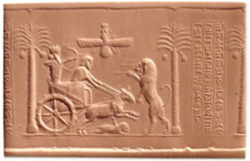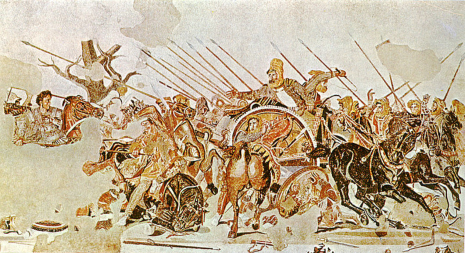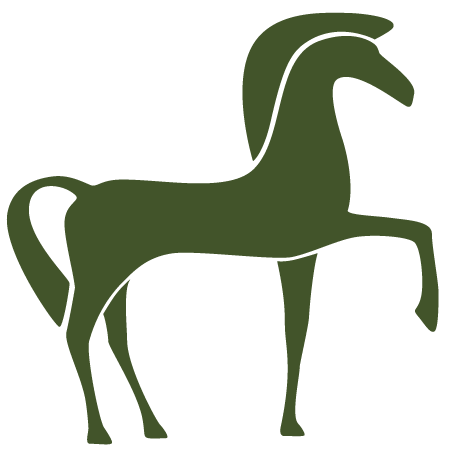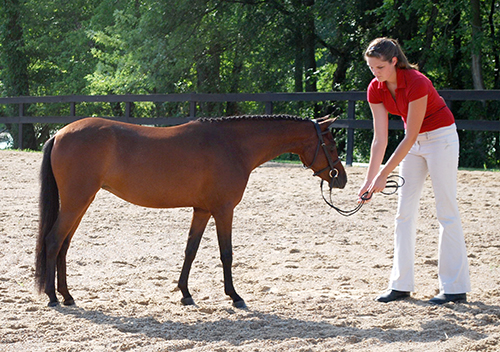What is a Caspian Horse?
The Caspian is a small (10-12.2 hand), elegant horse that makes an ideal mount for children. Unlike the comparably-sized pony breeds of northern origin, the Caspian is a naturally slim-bodied and refined horse. Caspians are highly trainable and excel at athletic endeavors, most notably jumping and driving. Purebred Caspian mares are typically bred to Caspian stallions to perpetuate the critically endangered breed, which includes fewer than 2,000 horses registered worldwide and approximately 500 Caspians in the United States. The prepotency of the breed shines through when Caspians are crossed with larger horses to produce sport ponies of exceptional quality.
History of the Breed

The Caspian horse holds the distinction of being both one of the oldest and one of the newest of horse breeds. Current archeozoologic evidence dates the Caspian back to at least 3,000 BC, pre-dating other recognized breeds of horses. When the Persian Empire collapsed in 644 AD, its royal horse was “lost” for more than a thousand years until its re-discovery in 1965. The Caspian may represent Horse Type 4 in the development of the modern horse, making it the only foundation type that exists as a modern breed. During its 5,000 year saga, the Caspian has experienced life as a royal treasure and a peasant’s cart horse. It has served as a source of national pride and a source of meat. While research on the breed’s origins continues, the current story of the Caspian horse is nothing short of amazing.
Rediscovery of the Caspian Horse
Without the careful observations and incredible tenacity of one woman, Louise Firouz, the Caspian horse may have remained hidden or been lost forever. Louise was an accomplished young horsewoman from Virginia. Louise met her Iranian husband, Narcy, during college and they moved to Iran in 1957. They lived near the ancient Persian Empire capital of Persepolis, founded by Darius I during his reign from 522 to 485 BC. Small, elegant horses were featured on many stone carvings on the palace walls. The stone carvings came to life when Louise first saw a small horse in a remote village near the Caspian Sea in 1965. With great effort and many setbacks, Louise collected a number of the small horses. The Caspian horse had been re-discovered. Political turmoil in Iran made her task nearly impossible at times, but Louise persevered and ensured the breed’s survival.

The Caspian resumed its status as royal treasure when HRH Prince Philip of England received a stallion and mare from the Shah of Iran in 1972. Due to his concern for the breed’s precarious position, Prince Philip assisted in securing the export of additional Caspians to the UK. The Caspian Horse Society of the United Kingdom (CHS-UK) was formed in 1975. An International Stud Book was established in 1978.
The Caspian Horse Society of the Americas (CHSA) was formed in 1994 and maintains the official breed registry for the Western Hemisphere.
Although Louise Firouz passed away in 2008, her legacy lives on in the remarkable Caspian horses she re-discovered and cherished.
Caspian Breed Type and Standard
General
The Caspian is a horse, not a pony, and therefore should be viewed in the same manner as when judging a Thoroughbred, i.e. the limbs, body and head should all be in proportion to each other. Foreshortened limbs or a head out of proportion to neck or body are faults. The overall impression should be of a well-bred, elegant horse in miniature.
Eyes
Almond shape, large, dark, set low, often prominent.
Nostrils
Large, low set, finely chiseled, capable of considerable dilation during action.
Ears
Short, wide apart, alert, finely drawn, often noticeably in-pricked at the tips.
Head
Wide, vaulted forehead (in most cases the parietal bones do not form a crest but remain open to the occipital crest). Frontal bone should blend into nasal bone in a pleasing slope. Very deep, prominent jaw bone and great width between jaw bones where they join at throat. Head tapers to a fine, firm muzzle.
Neck
Long, supple neck with a finely modeled throat latch.
Shoulder/Withers
Long, sloping, well modeled, with good wither.
Body
Characteristically slim, with deep girth. Chest width in proportion to width of body .It is a fault to have “both legs out of the same hole”. Close-coupled, with well-defined hindquarters and good ‘saddle space’.
Quarters
Long and sloping from hip to point of buttocks. Great length from stifle to hock.
Hocks
Owing to their mountain origin, Caspians may have a more angled hock than lowland breeds.
Limbs
Characteristically slender with dense, flat bone and flat knees. Good slope to pasterns, neither upright nor over-sloping.
Hooves
Both front and back are oval and neat, with immensely strong wall and sole, and very little frog. It must be emphasized, however, that this might vary with the location and terrain and hoofs should be maintained in their natural shape to ensure correct hoof balance and soundness. They should never be artificially shaped.
Coat/Skin
Skin thin, fine and supple, dark except under white markings. Coat silky and flat, often with iridescent sheen in summer. Thick winter coat. Mane and tail abundant but fine and silky. Mane usually lies flat (as in Thoroughbreds) but can grow to great lengths. Tail carried gaily in action. Limbs generally clean with little or no feathering at the fetlock.
Colors
All colors except piebald or skewbald (pinto). Grays will go through many shades of roan before fading to near white at maturity.
Height
Varies with feeding, care and climate. Growth rate in the young is extremely rapid, with the young Caspian making most of its height in the first 18 months, filling out with maturity. The average height is 11.2 hands and ideally should not exceed 12.2 hands.
Action/Performance
Natural floating action at all gaits. Long, low swinging trot with spectacular use of the shoulder. Smooth, rocking canter, rapid flat gallop. Naturally light and agile with exceptional jumping ability.
Temperament
Highly intelligent and alert, but very kind and willing.




